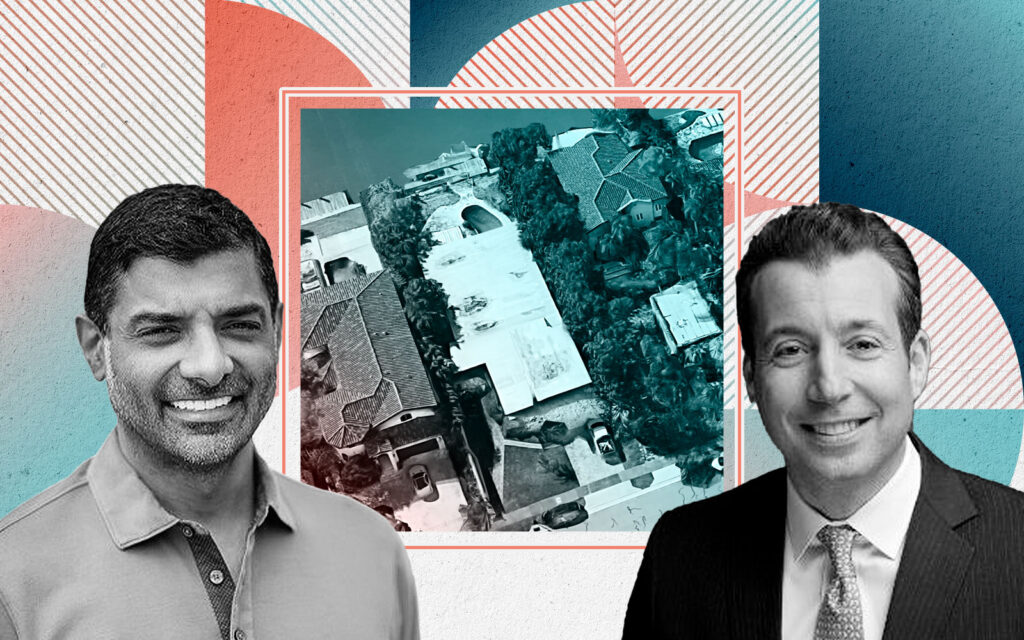Spectrum Business Ventures
invests in great people that are passionate about changing the world
We take an active role in helping management teams and founders of our investments define their financial needs, set goals, and understand key investment principles influencing their approach.
Latest News

Former MGM resorts executive Chris Nordling joins Vision Venture Partners as Chief Operating Officer
Chris Nordling Joins Vision Venture Partners as COO Vision Venture…

Fox launches private equity firm for esports
The esports industry is experiencing unprecedented growth, and Vision Venture…

Echo Fox gets investment from former San Jose Sharks co-owner
Esports, an industry once dismissed as a niche hobby, has…

How Effective Operation Management Can Positively Impact Companies In Achieving Business Goals?
Read more

How Amit Raizada Is Making A Mark In The ESports And Entertainment Sector
Amit Raizada is a prominent entrepreneur and investor who founded…

Why 2019 Is the Best Year Ever for eSports
The future of esports investment is brighter than ever. The…

Out-of-the-Box Investing with Start-Ups
Emerging tech investments offer one of the most exciting opportunities…

Why Investing in Multi-Family Housing is Just Plain Smart
Multi-Family Housing Investments offer an incredible opportunity to generate steady…

VC Boss Amit Raizada Sells Venetian Islands Luxury Spec Home for $19.2 Million
March 25, 2025 Amit Raizada, CEO of Spectrum Business Ventures…

Amit Raizada Finds Buyer for Miami Venetian Islands Luxury Home Listed at $21 Million
February 3, 2025 Amit Raizada, CEO of Spectrum Business Ventures…

Jeff Bezos’ ‘Billionaire Bunker’ Estate Is Just One of the Celebrity Homes in Miami Filled With Glitz and Glam
Amit Raizada, CEO of Spectrum Business Ventures Inc., continues to…

Amit Raizada: Wildly Sucessful Business Man With A Philanthropist Heart
Amit Raizada, investor and entrepreneur extraordinaire, has been taking the…

Jared Jeffrie’s was a rising NBA executive, then he decided to embrace esports
Jared Jeffrie’s Esports Career would take an unexpected turn, wanted…

Rick Fox Forms New Private Equity Firm With Esports Focus
Esports investment strategies are transforming the gaming industry, and Rick…

VVP’s Stratton Sclavos Says Esports Leagues Are ‘Everything’ As 10-Figure Industry Continues To Grow
Esports league investment is rapidly becoming one of the most…

Spectrum Business Ventures, Inc. CEO, Amit Raizada, Lists Rivo Alto Waterfront Mansion on Miami Beach’s Coveted Venetian Islands
The Miami luxury property market is experiencing unprecedented growth in…

Spectacular Venetian Islands Estate Developed by Amit Raizada at 240 W Rivo Alto Drive Hits the Market
Miami is one of the most desired places to move…

Amit Raizada & the transformation of the University of Kansas Hospital
Amit Raizada, a visionary entrepreneur and philanthropist, has played a…

Spectrum Business Ventures CEO Amit Raizada announces SBV Will Continue to Comply with All COVID-19 Restrictions
SBV CEO Amit Raizada’s Announcement on current restrictions Amit Raizada…

Amit Raizada a Visionary Entrepreneur And Investment Strategist
Most people will perhaps be familiar with the name of…

Successful VC Amit Raizada Explains “Why My Kids Make Great Investments Strategies”
What’s Amit Raizada’s insight on modern strategic venture investments? What’s…

Amit Raizada the Los Angeles Venture Capitalist with a Vision
Not many industries invoke as much interest as venture capital…

Amit Raizada Reviews Some of the Largest Mergers and Acquisitions in History
Amit Raizada is an expert on mergers and acquisitions. Through…

Amit Raizada Entrepreneur And Investor – Building Financial And Social Bridges
Going back and forth from Miami and Los Angeles. Amit…

Essential Tips for Working from Home from Entrepreneur Amit Raizada
Unless you work in an essential industry, odds are that…

Spectrum Business Ventures CEO Amit Raizada reaffirms commitment to Medical Technology Investments
Spectrum Business Ventures Founder and CEO Amit Raizada announced this…

Spectrum Business Ventures buys ethanol plant in Nebraska
Kansas City-based Spectrum Business Ventures Inc. has bought a Mead,…

SBV acquires ethanol plant
In the US, Kansas City-based Spectrum Business Ventures (SBV) has…

Spectrum Business Ventures CEO Amit Raizada says firm continues to invest as economy reopens
Kansas City, Missouri, May 11, 2020 (GLOBE NEWSWIRE) — As…

Amit Raizada: Changing the ESports Paradigm
LOS ANGELES, Nov. 19, 2018 /PRNewswire/ — Amit Raizada eSports investment is…

MotoGP, Nicky Hayden Fiancé Jackie Marin Marries Amit Raizada
Jackie Marin, a Southern California native, emerged into the public…

Miami High Net Worth Amit Raizada of Spectrum Business Ventures
Miami’s real estate market, known for its opulence and robust…

Venture Capital & Private Equity Partner Amit Raizada show’s strong Success in Luxury Markets
Spectrum Business Ventures, Inc., a private equity firm led by…

Miami Billionaires: From Jeff Bezos to Amit Raizada and Norm Braman
From the top down we know the wealthiest Miami’s wealthiest…

E11even’s Marc Roberts drops $17M on waterfront Miami Beach spec home
Nightclub mogul Marc Roberts and his wife, Marci Roberts, dropped…

This VC Explains How To Avoid Pitching Good Ideas Badly
Too many startup founders’ otherwise great ideas fall flat when…

Strategic Partnerships in the post-COVID Age
Collaborations for business growth have become a vital strategy for…

The economy will reopen. Here’s what you can do to prepare.
Since the outbreak of the coronavirus pandemic, the US economy…

Investor Amit Raizada on Private Sector Space Exploration
The future of space travel is no longer the exclusive…

How a Problem Gave Birth to a Company
Sometimes the drive to solve a problem in one business…

Family Foundations: Building A Philanthropic Legacy
Are you looking to make a meaningful change in the…

Hot Trends in AI: Innovation in Regulatory Technology
AI-powered regulatory solutions are transforming industries by combining artificial intelligence…

Amit Raizada The Pinnacle of The American Dream
Certain individuals have a way of capturing that elusive American…

Jared Jeffries was a rising NBA executive, then he decided to embrace esports
The eSports industry has rapidly evolved into a multi-billion-dollar market,…

How Millennials Are Positively Influencing Business Growth Success
Millennials have frequently been blamed for killing certain industries such…

VVP’s Stratton Sclavos Says Esports Leagues Are ‘Everything’ As 10-Figure Industry Continues To Grow
The eSports industry has evolved into a billion-dollar ecosystem, attracting…

Six Disastrous Mistakes to Avoid AFTER Securing Increased Funding
After you’ve secured increased capital for your venture, you feel…

ESports Rockstar Amit Raizada Bets On Echo Fox
What do you get when you combine an award-winning, successful…

5 Reasons Whiteboard Sessions Beat Online Meetings
So, there is a lot of buzz around online collaboration…

Business Get Lucrative Investment Strategies With Amit Raizada
Amit Raizada Investment Strategies for Business Success When navigating the…

Former MGM resorts executive Chris Nordling joins Vision Venture Partners as Chief Operating Officer
Chris Nordling Joins Vision Venture Partners as COO Vision Venture…

Fox launches private equity firm for esports
The esports industry is experiencing unprecedented growth, and Vision Venture…

Echo Fox gets investment from former San Jose Sharks co-owner
Esports, an industry once dismissed as a niche hobby, has…

How Effective Operation Management Can Positively Impact Companies In Achieving Business Goals?
Read more

How Amit Raizada Is Making A Mark In The ESports And Entertainment Sector
Amit Raizada is a prominent entrepreneur and investor who founded…

Why 2019 Is the Best Year Ever for eSports
The future of esports investment is brighter than ever. The…

Out-of-the-Box Investing with Start-Ups
Emerging tech investments offer one of the most exciting opportunities…

Why Investing in Multi-Family Housing is Just Plain Smart
Multi-Family Housing Investments offer an incredible opportunity to generate steady…

VC Boss Amit Raizada Sells Venetian Islands Luxury Spec Home for $19.2 Million
March 25, 2025 Amit Raizada, CEO of Spectrum Business Ventures…

Amit Raizada Finds Buyer for Miami Venetian Islands Luxury Home Listed at $21 Million
February 3, 2025 Amit Raizada, CEO of Spectrum Business Ventures…

Jeff Bezos’ ‘Billionaire Bunker’ Estate Is Just One of the Celebrity Homes in Miami Filled With Glitz and Glam
Amit Raizada, CEO of Spectrum Business Ventures Inc., continues to…

Amit Raizada: Wildly Sucessful Business Man With A Philanthropist Heart
Amit Raizada, investor and entrepreneur extraordinaire, has been taking the…

Jared Jeffrie’s was a rising NBA executive, then he decided to embrace esports
Jared Jeffrie’s Esports Career would take an unexpected turn, wanted…

Rick Fox Forms New Private Equity Firm With Esports Focus
Esports investment strategies are transforming the gaming industry, and Rick…

VVP’s Stratton Sclavos Says Esports Leagues Are ‘Everything’ As 10-Figure Industry Continues To Grow
Esports league investment is rapidly becoming one of the most…

Spectrum Business Ventures, Inc. CEO, Amit Raizada, Lists Rivo Alto Waterfront Mansion on Miami Beach’s Coveted Venetian Islands
The Miami luxury property market is experiencing unprecedented growth in…